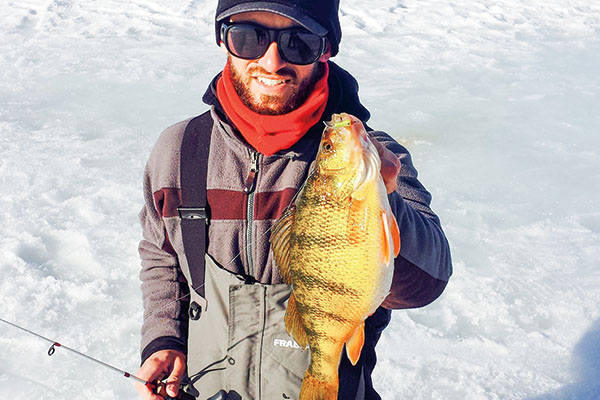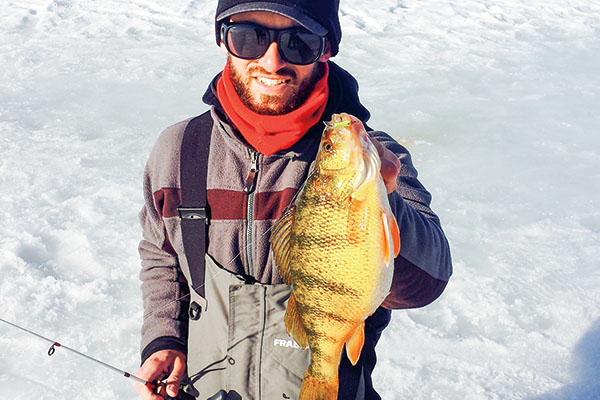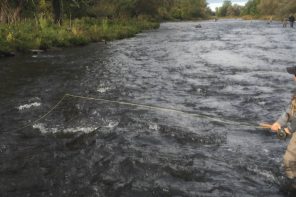
Yellow perch hold a special place in the hearts of hardcore panfish anglers. Seasoned anglers can recount the precise details surrounding the capture of their biggest yellow perch from decades past as though it was yesterday. Others spin tales of the day they got into a mother lode of jumbos and filled a fish basket too heavy to lift. For those that grew up close to a booming perch fishery, nostalgic stories are recounted of the glory days. Today’s anglers continue the quest to catch perch topping the two-pound mark.
Giant perch remain available across wide stretches of North America for those willing to put in the effort. Mostly, though, you can forget about duplicating your grandfather’s success on storied perch lakes. Smaller fisheries get wiped out by heavy fishing pressure, and even big waters that continue to produce jumbos are changing quickly, causing perch to alter their feeding habits and locations.
Perch are opportunistic and have adapted to new invasive food sources, such as round gobies on Lake Simcoe and spiny water fleas on Lake of the Woods. Across the Great Lakes, jumbos are showing a resurgence in areas like the north shore of Lake Superior, Upper Green Bay on Lake Michigan, and in pockets throughout eastern Lake Ontario and northern Lake Erie—often driven by a change in their forage. Other historic places for jumbos, like the Finger Lakes in New York, Lake Gogebic in the Upper Peninsula of Michigan, the Mississippi River’s northern stretches of Minnesota and Wisconsin, Devils Lake in North Dakota, Lake Poinsett in South Dakota, the Sandhill lakes in Nebraska, and Interlake region of Manitoba, continue to possess the characteristics to produce 2-pound-plus perch. However, apart from Devils Lake, these are largely not numbers fisheries. These are locations where hardcore ice anglers put in their time hunting trophy fish with a realistic chance at success.
Jumbo Perch Prerequisites
Fishery managers have spent a considerable amount of time studying what it takes to consistently grow big perch. From strictly a fishery management perspective, it’s a fairly straightforward matter. People such as Nate Herman of Herman Brothers Lake Management in Peoria, Illinois, tell you it’s simply a matter of perch having everything they need, at all stages in their life cycle, to sustain maximum growth. With good water quality, high concentrations of food, low competition for that food, and minimal predatory impact, Herman can grow adolescent perch to 14 inches in just three years.
Outside closed managed systems, factors for growing giant perch are no different, as demonstrated by decades of scientific studies. The most important requirement is a constant and abundant food supply throughout the entire life cycle of perch. A study examining growth factors of Midwest perch was performed by South Dakota researchers John Lott, Dr. David Willis, and David Lucchesi. They studied the relationship of food habits to perch growth and population structure in six glacial lakes in South Dakota. They found a direct correlation between diet and growth, and that fast growth rates in high-quality perch populations were attributable to diets consisting primarily of macroinvertebrates such as amphipods, chironomids, and corixids.
Perch in these populations also had a higher body condition index (a measure of plumpness or fatness) and a lower relative abundance. Perch in the lower-quality lakes had reduced body condition, slower growth, and higher relative abundance. Overall, in the high-quality waters with abundant macroinvertebrates, 3-year-old perch averaged 7.5 to 9 inches, while mean length was just 4.2 to 5.6 inches in waters where foods important to fast growth were lacking.
These findings reflect what is evident in many of today’s most productive perch fisheries across South Dakota and North Dakota. During the years of expanding fisheries across the Dakotas, new lakes and sloughs were constantly being formed as nutrient-rich land was flooded. This resulted in new populations in systems with abundant supplies of freshwater shrimp and few predators….





